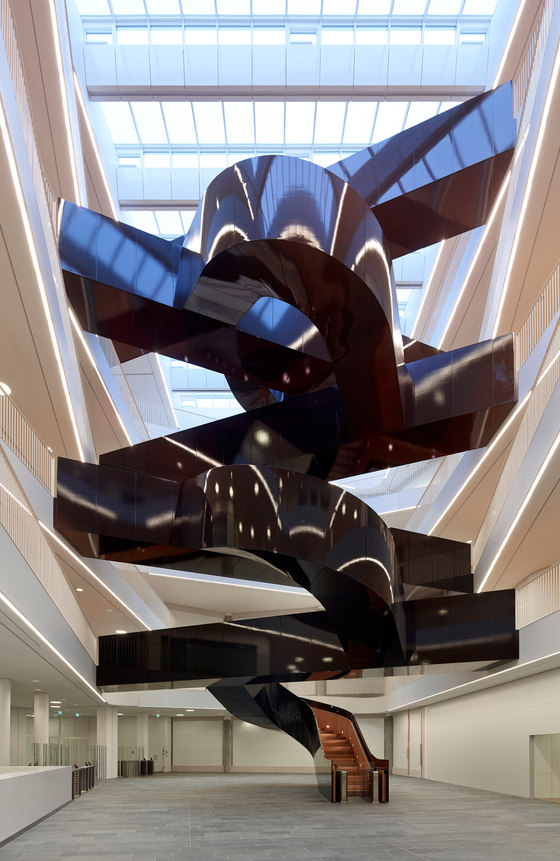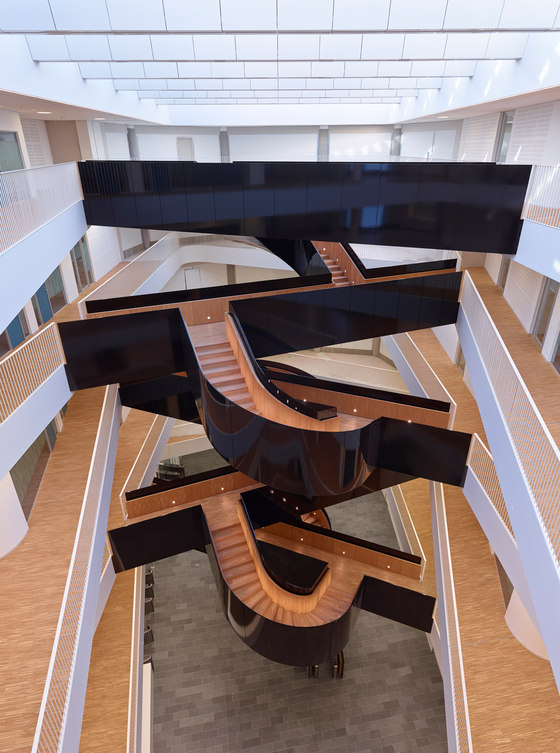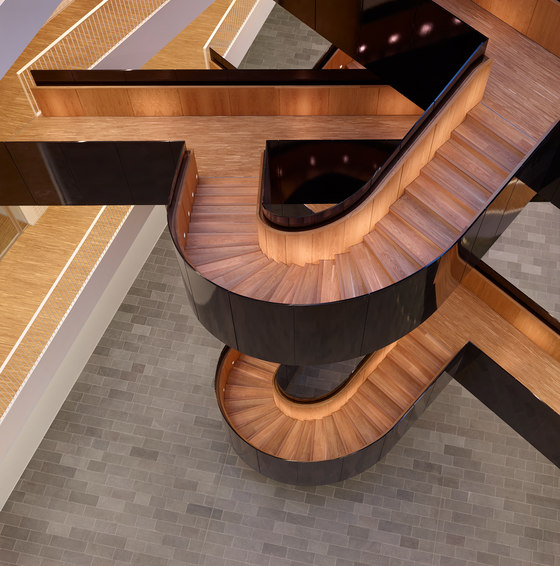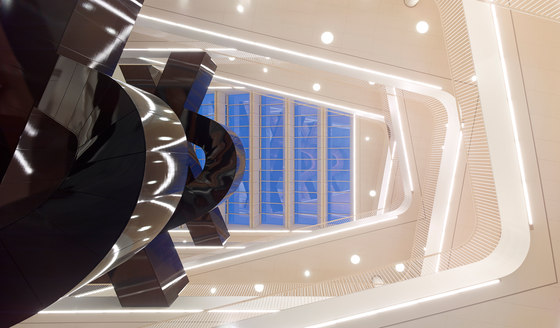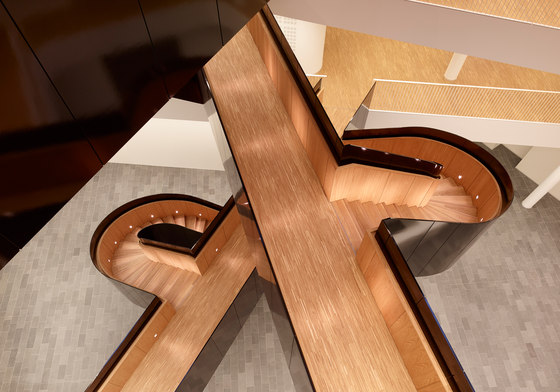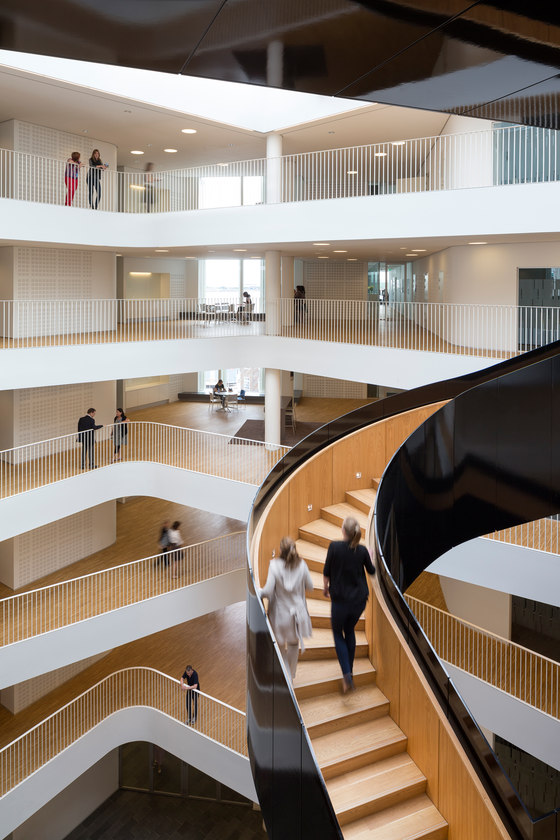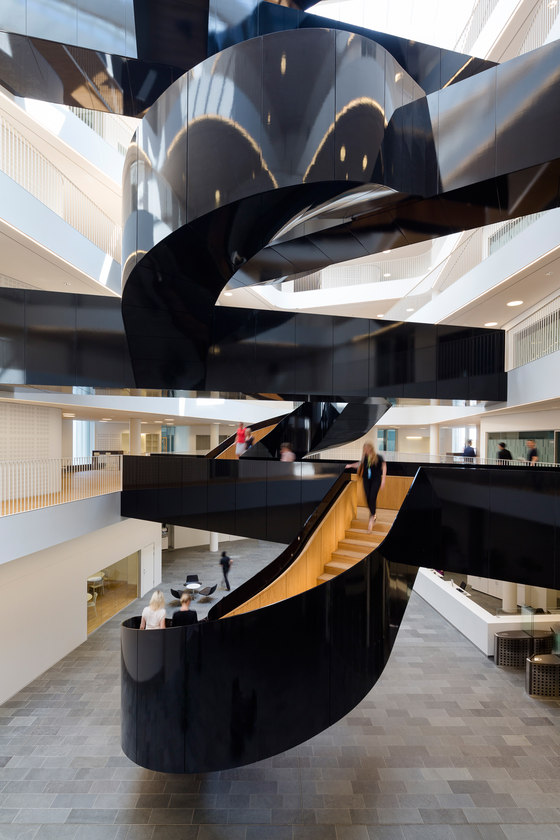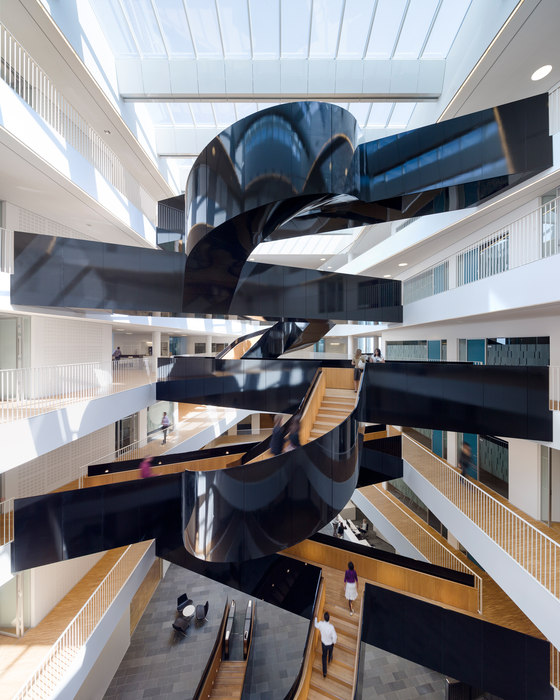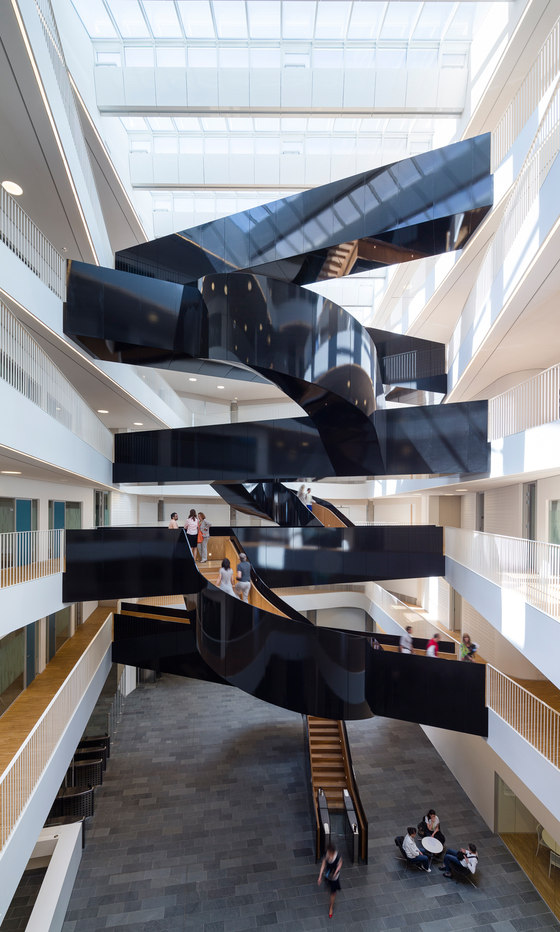CAMPUS 1 & 2
The entire UN City project is made up of two parts: Campus 1 and Campus 2.
Campus 1 comprises an office building with 45,000 m2 of floor space. This office complex has been constructed to low-energy class 1 standards, which is partly reflected in the installation of solar panels, and as such is a state-of-the-art building in the energy and climate field.
Campus 2 is a new, high-tech warehouse for UNICEF, which has been built further out on the Nordhavn waterfront. The warehouse was handed over to UNICEF last year.
CAMPUS 1
Bringing together the various agencies and functions
of the United Nations offices in Copenhagen, the new main office building is located at the northern harbour of Copenhagen.
Balancing openness and security
High security and accessibility standards have been central considerations in the design of the new main office building. The UN City must live up to the most stringent requirements, providing a protected and safe environment, while at the same time appearing open and accommodating to the city. Located on an artificial island the building is naturally separated from its immediate surroundings, while still being higly visible from both the city and the water.
From above, the eight-pointed star shape is a clear visual reference point, which, like the UN, reaches out to all corners of the world. Similar to the surrounding rusty pier edges, the UN city has a dark burnished steel base from which the white main building rises. This is a reference to the elegant white ships that characterize this part of the Copenhagen harbor.
The building has a façade cladding of white perforated aluminum shutters, developed by 3XN and contractor Pihl specifically for the UN City. The shutters ensure solar shading without blocking the view or the daylight. Since the facade is divided into three meter long modules, it is possible for the employees to control the sunshade from their computers. The result is an improved indoor environment, and a dynamic façade expressing a building full of life.
From the core of the star-shaped building, a daylight filled atrium connects the lobby level containing all common functions, with the office levels, where the various UN agencies are distributed. From the atrium a central staircase binds all levels together. 3XN has created the staircase as a dramatic spatial sculpture, which is to be seen as a symbol of the UN’s work to create dialogue, interaction and positive encounters between people in all parts of the world. In the daily life, the sculptural form inspires the UN employees to want to use the stairs, and thus the staircase also forms the basis for dialogue, cooperation and informal meetings between the various UN organizations.
All office levels are characterized by an open and flexible layout encouraging knowledge sharing and interaction as well as individual concentration. Work stations are ensured plenty of high quality daylight and a good indoor climate.
Meeting facilities
The main office building has more than 90 meeting rooms including a number of flexible rooms on each floor that staff can use for various purposes. The auditorium is a conference facility with a total capacity of 450 people. For smaller conferences and meetings, the auditorium can be divided into smaller rooms by using specially designed partitions.
Sustainability at all levels
From the design phase and onwards, the teams involved in the UN City project have worked to comply with international environmental standards and regulations. Campus 1 has been designed to use at least 55% less energy than expected from a similar-sized office building. The UN City is thus expected to become one of Denmark’s most energy efficient buildings with an annual energy consumption of less than 50 KwH per m2 (Danish Energy Class 1). The UN City (Campus 1) is registered with the LEED sustainability ratings system with the certification goal of LEED® Platinum and has been awarded the prestigious ”GreenBuilding Award 2012” by the European Commission.
Greening measures
Air quality - The building has been designed to limit the use of chemicals and pollutants during both its construction and its use. The building is entirely ventilated with filtered outside air. This ensures that only clean, fresh air is present in the building and helps balance the interior humidity level.
Solar panels - More than 1,400 solar panels are lining the roof of the building to support the goal of generating renewable energy onsite. With an estimated total production of 297,000 kWh/year, the solar panels significantly reduce the need for electricity from the grid.
Sea water cooling - Cold seawater pumped into the building’s cooling system, almost entirely eliminating the need for electricity to power the cooling cycle.
Water efficiency - Innovative aerators have been placed in the taps in kitchens, toilets and showers throughout the building. The low-flow taps reduce water usage. In addition, pipes on the roof capture almost 3,000,000 litres of rainwater annually, which is almost enough to flush the toilets of the entire building without using potable water.
Solar shades - Sophisticated solar shades on the building’s facade can be opened and closed to either trap or reflect the sun’s heat.
Reflective roofs - The roof of the building has been coated with a white, recyclable membrane, made from plant-based materials. The environmentally-friendly coating reflects sunlight and reduces the solar warming of the building.
CAMPUS 2
UNICEF’s supply operation has been in Copenhagen since 1962. It moved to Marmormolen in 1975, and administrative buildings were added in 1984.
In March 2012, over 300 UNICEF staff moved to Campus 2 to allow for the construction of Campus 1 to be completed. Campus 2 is home to the world’s largest humanitarian warehouse which stores some 850 different kinds of life-saving supplies for children. Campus 2 also features UNICEF’s Innovation Lab and Global Learning Centre. Temporary pavilions provide additional office space.
Architects (Campus 2): 3XN
Architects (Campus 2): Creo Architects A/S
CAMPUS 1
Builder: CPH City & Port Development
Contractor: E. Pihl & Son A/S
Engineering consultancy: Orbicon A/S
Ownership: The UN City is owned by ATP (45.75 %), PensionDanmark (45.75 %) and CPH City & Port Development (8.5 %). The three parties have formed a consortium, Harbour P/S, that leases the UN City to the Danish State.
CAMPUS 2
Builder: CPH City & Port Development
Contractor: E. Pihl & Son A/S
Engineering consultancy: Moe & Brødsgaard A/S
Ownership: Campus 2 is owned by CPH City & Port Development
Automated warehouse system: SSI Schaefer Denmark A/S
